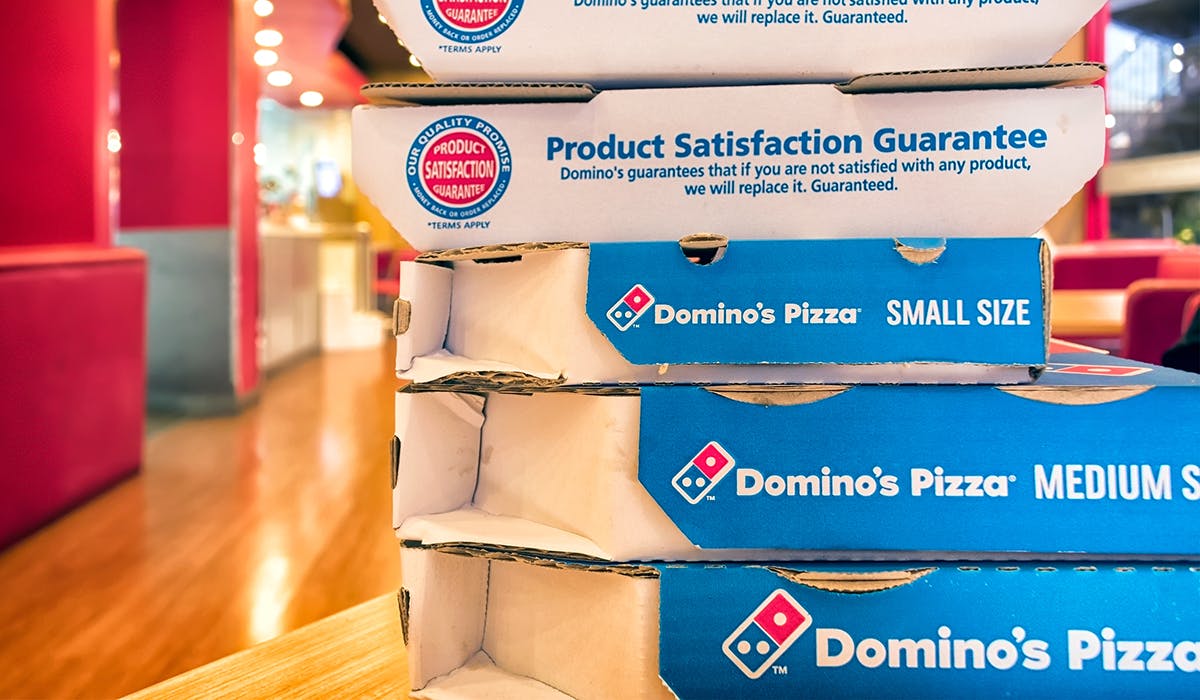
Expanding Domino's UK: CEO Explores Acquisition of New Brand for Growth

Domino's UK CEO considers acquiring a second brand to enhance growth potential through strategic utilization of digital investments, expertise, and franchise network, aiming to maximize capabilities and expand market reach
The CEO of Domino’s has hinted at the possibility of acquiring a second brand to drive expansion and fully utilize the company's existing strengths.
Andrew Rennie, who assumed the role of chief executive of Domino’s Pizza Group in August this year, emphasized that one of the key motivations for this strategic move is the increasing number of the company's 35,000 franchisees diversifying their investments in other brands due to the limited growth opportunities currently offered by Domino’s. Incorporating another brand into the company's portfolio could potentially retain these franchisees.
"I should consider bringing them back into one group to maximize synergies," Rennie told investors on December 11. Bringing back franchisees who want to invest more widely would ensure that Domino's training investment is not benefiting another business.
Rennie highlighted that the company possesses extensive knowledge of UK consumers, robust marketing capabilities, digital infrastructure, and supply chain, placing it in a strong position to expand through the acquisition of another brand.
He stressed that the group will not hastily purchase another brand, but rather has specific criteria in place for what the potential brand must embody.
The company is seeking a well-established and profitable brand that has significant growth potential. They are also interested in finding a business with synergies between their brand and product. Rennie expressed patience in this search, stating that they are not in a rush and are already experiencing significant growth. However, they are open to considering the right opportunity that meets their criteria.
Leveraging digital investment
Domino’s has made a significant investment in a new digital platform that will unlock capabilities that the company previously did not have access to. Rennie cited customer segmentation as one of the features that can now be enabled through the new IT system.
Improving the digital experience for consumers is a top priority, and the company is set to roll out initiatives to achieve this goal in the first and second quarters of next year. Rennie declined to provide specifics in order to keep the company's competition in the dark, and also did not disclose the details of the upcoming loyalty scheme enabled by its new IT capabilities.
However, he stated that the scheme will be implemented in stages. The first stage is set to commence in the first quarter. "We have a system that requires minimal time and cost for rollout," he explained. "This will provide us with valuable insights to proceed to stage two."
The second stage is scheduled to occur in the third quarter and will require a bit more investment from the company, followed by the third stage, expected to be in the first quarter of 2025 and will be the most costly.
Domino's in the UK and Ireland has taken into account both the successes and failures of the brand's loyalty scheme launches in other countries.
"We have conducted extensive study of the US system," Rennie stated. "We have closely examined their intended actions and learned from their mistakes. Additionally, we have conducted consumer research to understand preferences in the UK, as we understand that what works in one country may not necessarily work in another."








